Experiments in the software Quartz :
- Mona Lisa
For this experiment I played around with the patch which takes control of your camera. After playing around a bit testing and experimenting, came up with the idea of putting my face onto the Mona Lisa. By making a billboard patch containing the image of the Mona Lisa, (with the face cropped out in photoshop) I was able to move the live image of me via the webcam and move my face in place. The first image shows me playing around with just placing my face in the png mona Lisa billboard.
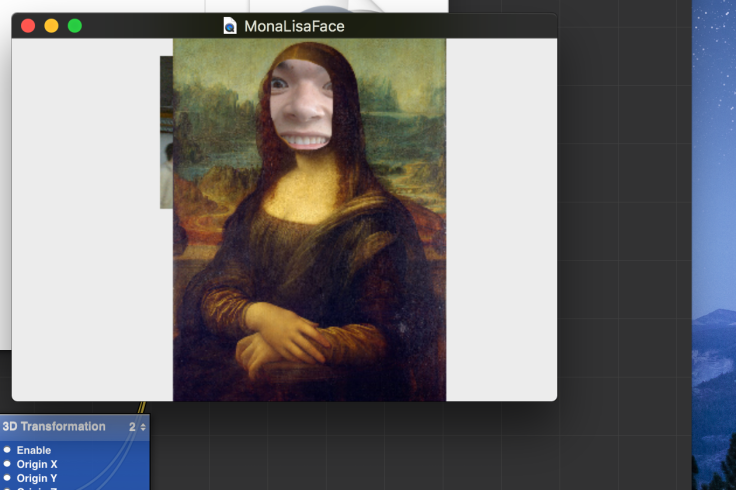
The second image is me properly posing my head at kinda the right size on the mona Lisa’s face.
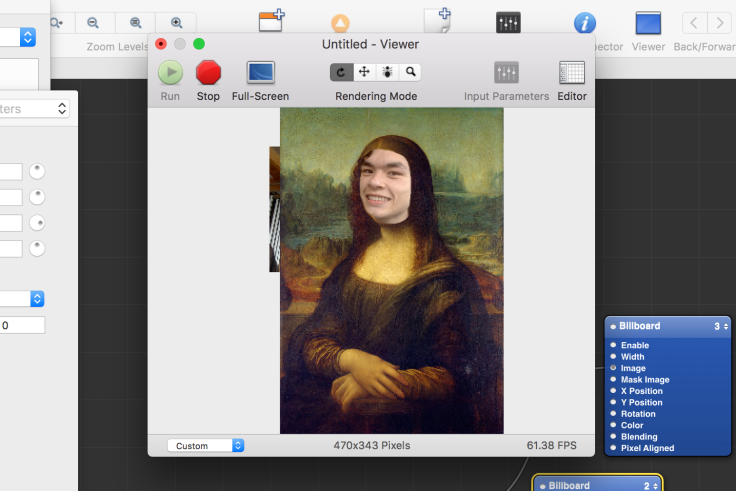
Code:
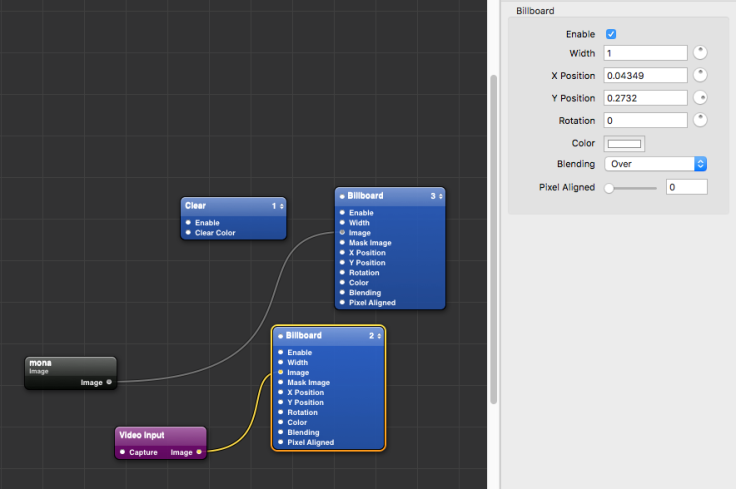
As you can see all i have used is two billboards, one linked to my laptop webcam an the other portraying a photoshopped faceless Mona Lisa i created earlier. All I dad was change the variables of the x and y position of the webcam billboard till my face was in the correct place.
2. ‘Spheriqal’
In this experiment I played around with the ability to have multiple layers. By using cubes and wave generators, Replicate in space and 3d transformation I was able to make is spinning shape made from cubes surrounded by moving cubes.
Below are some snapshots of the quartz program and its layers I had for this experiment:
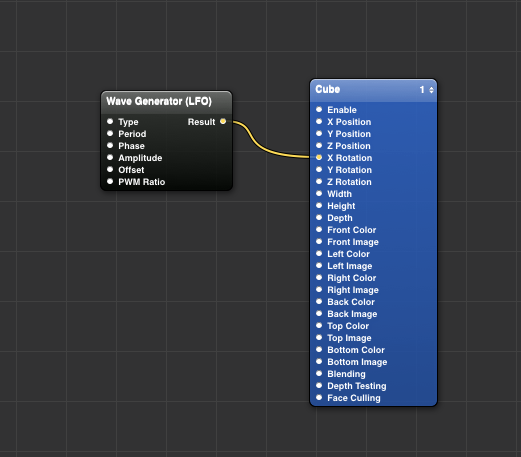
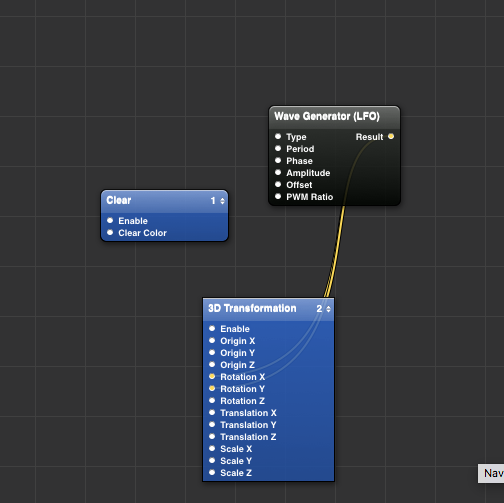
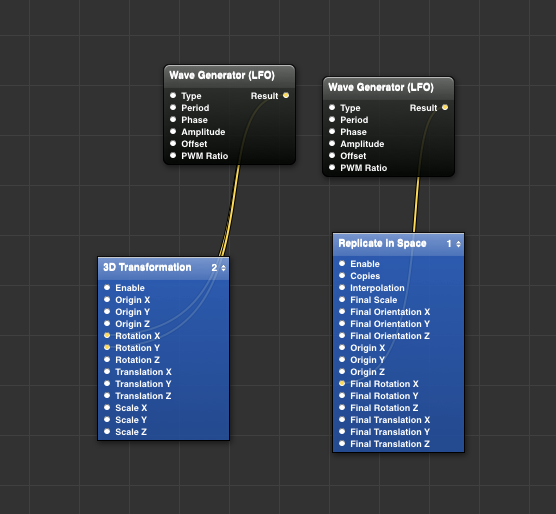
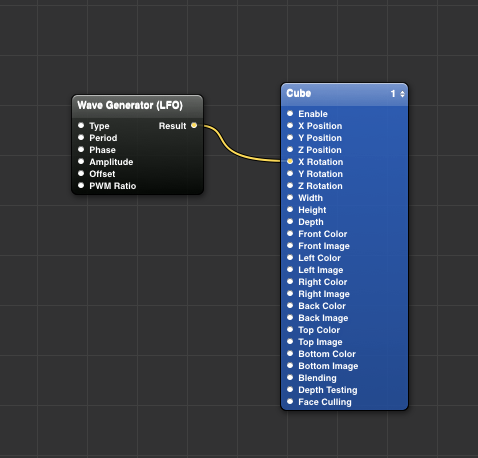
The wave generator gave the variables for the x rotation of the sets of cubes. This gave the pattern of rotation the cubes have The movement of the cube was then determined by the 3d transformation patch which was the parent layer of single cube. The 3d transformation was within a replicate space patch as the replicate space made the single cube into a cluster of cubes. For this experiment I had it at 100. This made the cluster of cubes at the centre of the ‘spherical’ and how it was able to rotate all the same (due to its layers).
†The same can be seen for the exterior shell of cubes, they all are replicants of the original cube which got its values of rotation from a LCO (wave generator) and was within a replicate space patch.
I was able to make the spheres within each other by have the interior sphere (the wave generator and cube) within the same layer as the 3D transformation.
3. Atom
further refining the ‘spheriqal’ experiment i added lighting patches and changed the exterior cubes to sphere, basing it more of the shape of an atom.
here is the result:
When playing around with this experiment, I was adding more cubes and spheres and by doing so I ended up crashing the program. Thankfully I had saved a version before doing this as the program completely froze and I had to force quit.
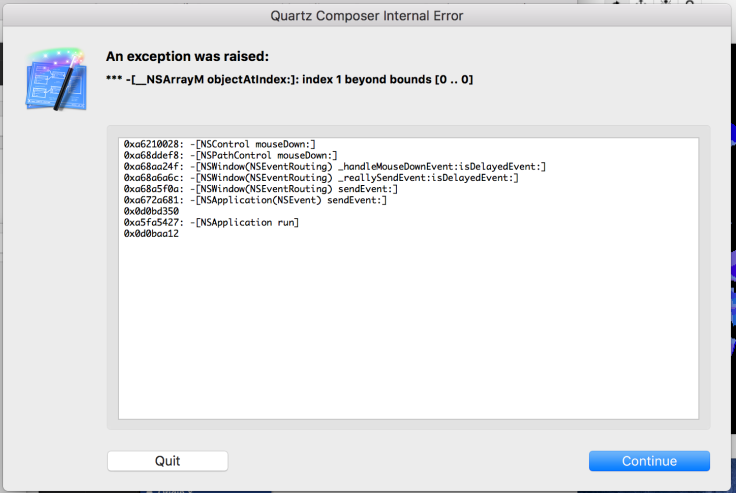
Here is the snapshots of the layers of this experiment:
This experiment is very similar to my previous one ‘spherical’ the only different is that i was able to change the shape of the exterior cubes into spheres and add a lighting patch to give it the colour and tone it has now.
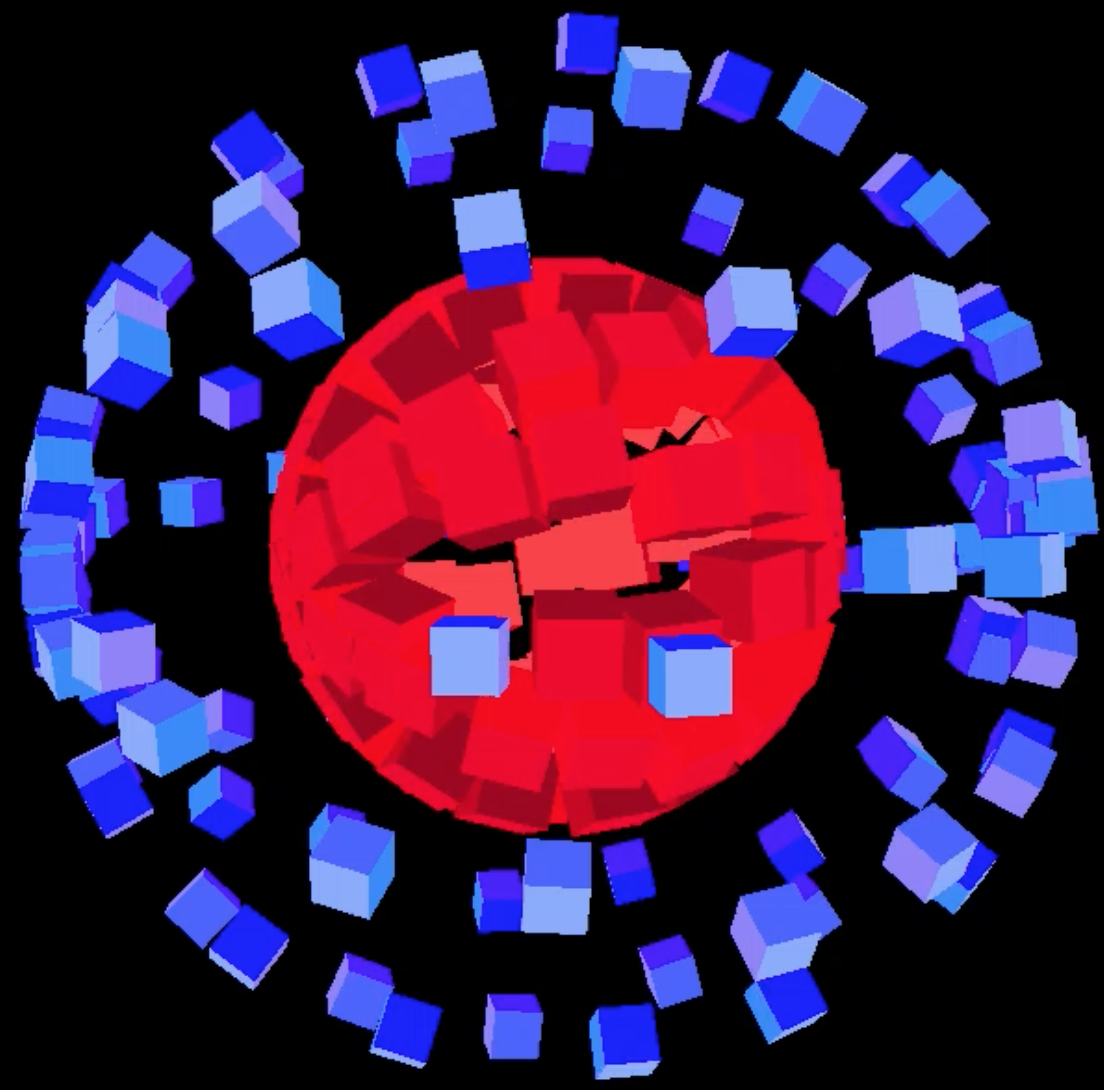




Leave a comment